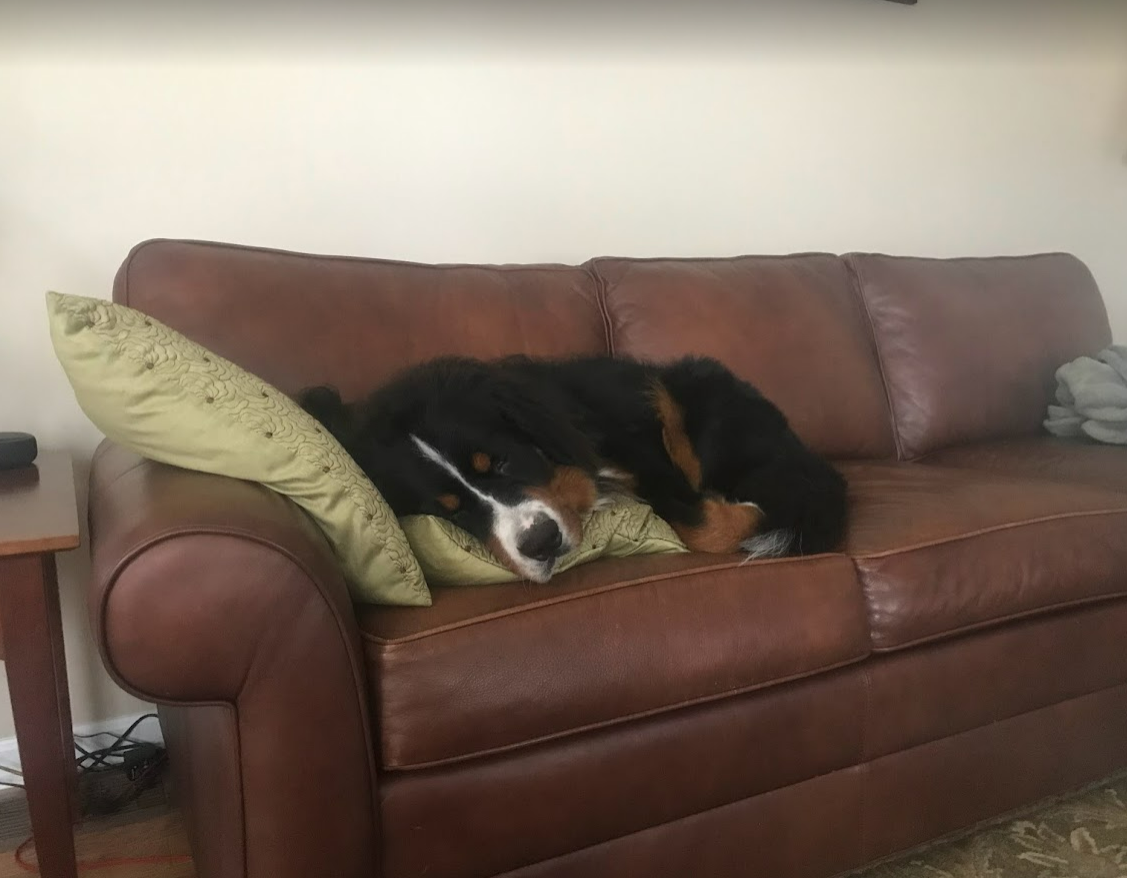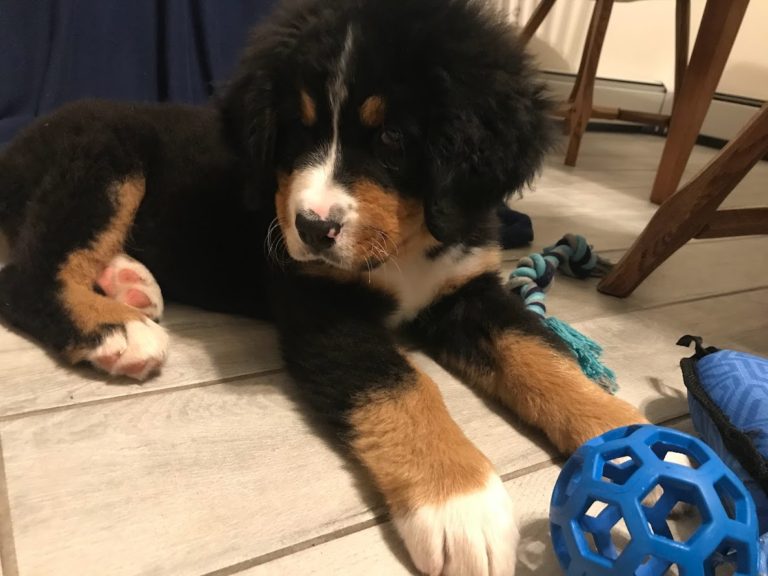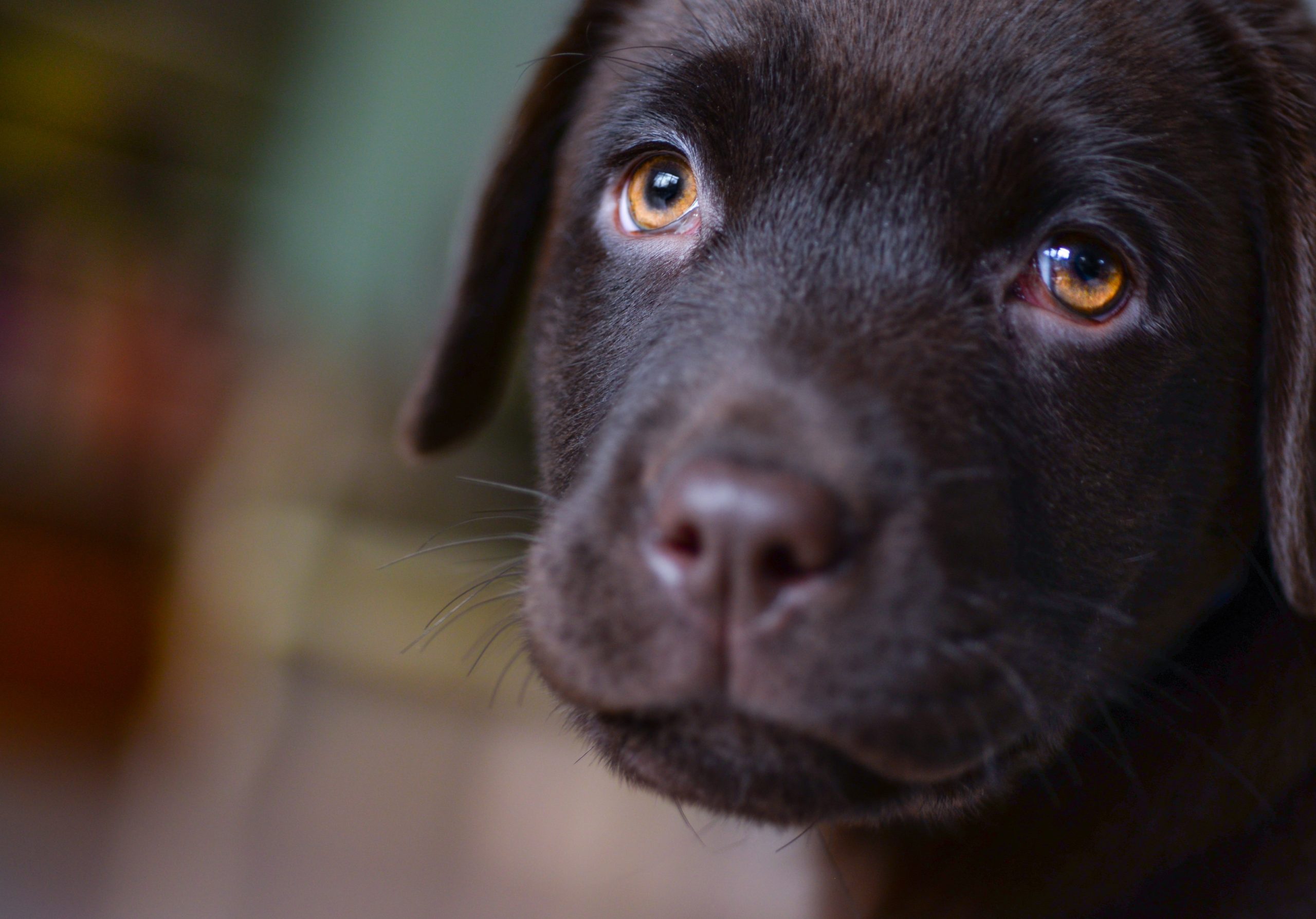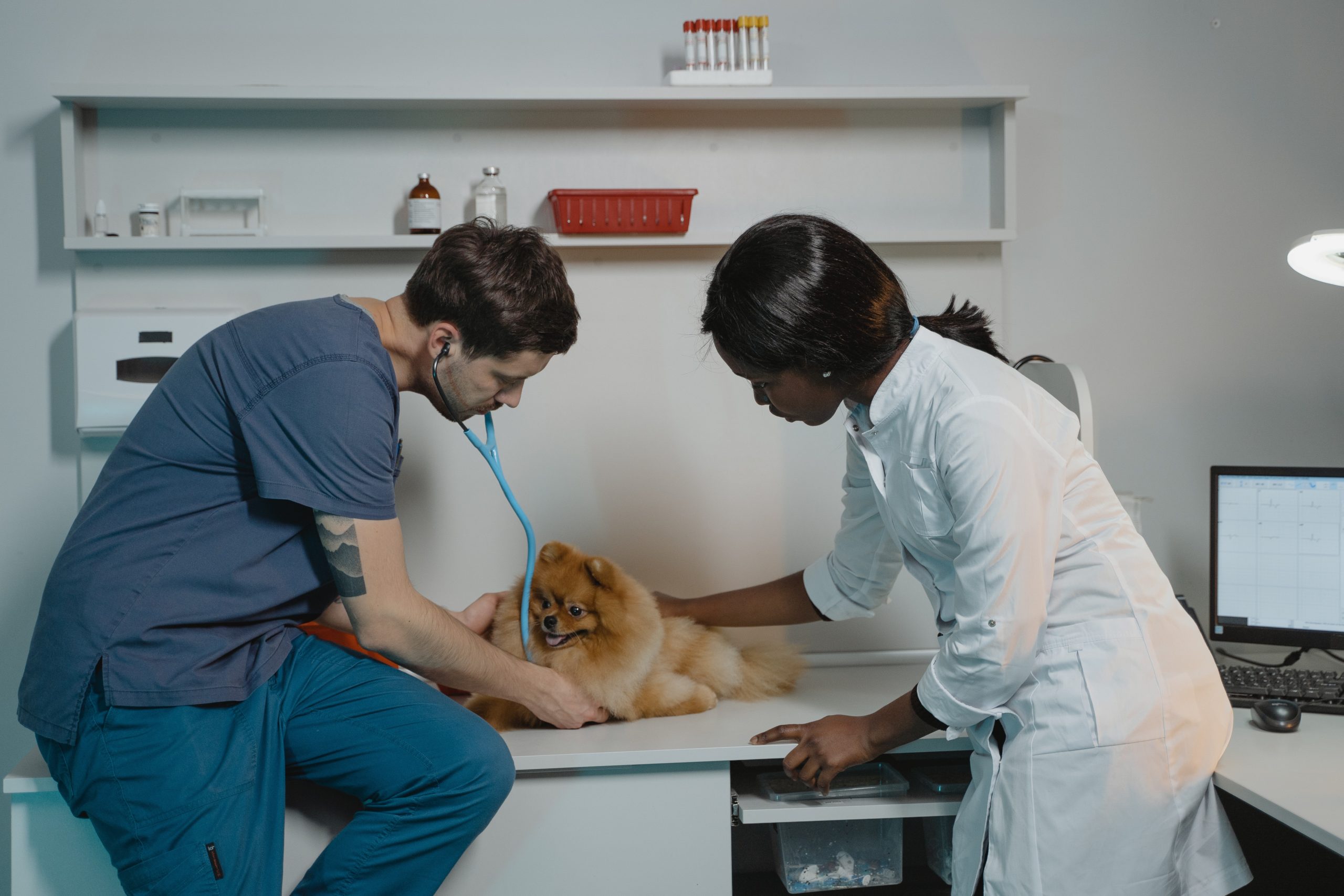Puppy Strangles: 6 Quick Tips to Make Your Dog Comfortable
When Ezra had Puppy Strangles, I was almost inconsolable. I took three days off of work, didn’t sleep, and didn’t leave his side unless I had someone to watch him in my place, even to just go to the bathroom. I was in tears most of the time.
Was this a bit overdramatic? Maybe. There were plenty of reasons not to panic – he wasn’t hospitalized for one. That was a good sign. And though I had little knowledge of this disorder, my vet did say that most cases aren’t life-threatening. Another good sign.
Still, I was stressed because Ezra was obviously unwell. He also couldn’t sleep. He would sit up with his eyes closed and breathing very heavily. He was clearly tired, but was feeling so terrible he couldn’t actually fall asleep. Any time he scratched, he would howl in pain. But he would keep scratching. It was like he didn’t know what else to do to feel better. It broke my heart.
For both of our health, I needed to try something, anything, to make him more comfortable. This post will document all the things I attempted, what worked, and what didn’t work. Maybe some of these tips will work for you.
This post contains affiliate links, which means I receive a small commission, at no extra cost to you, if you make a purchase using this link. Please see my disclosure for more details.
What is Puppy Strangles?
Puppy Strangles, or Canine Juvenile Cellulitis, is an autoimmune disorder in young dogs where the skin attacks itself. It looks like pustules that are focused around the lymph nodes on the neck, back, face near the lips and eyelids, anus, or vulva. It’s a rare disorder in dogs and not much is known about it. It’s called Puppy Strangles because it affects dogs generally under six months old and can lead to asphyxiation if left untreated.
How do dogs get Puppy Strangles?
Because it’s an autoimmune disease, it isn’t contagious. So if your puppy has it, it won’t spread from one dog to another. This is good. However, not much is known about the disease itself. Some vets assume it’s hereditary, but that hasn’t been completely confirmed.
6 Quick Tips to Comfort Your Pup
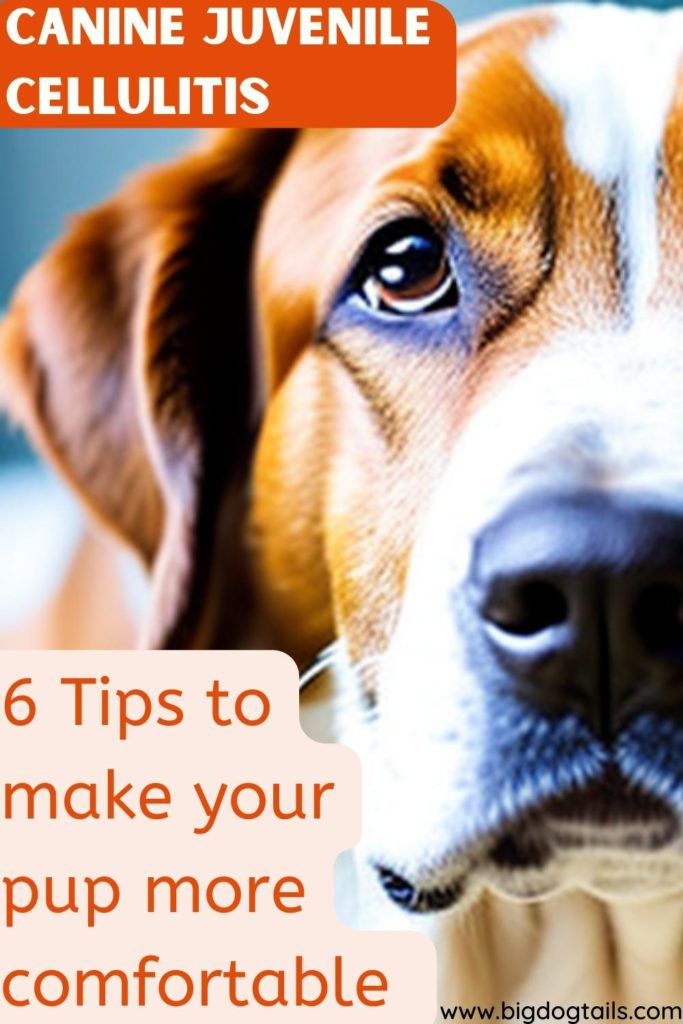
Tip 1: Give your dog new toys.
The idea is that he will be occupied with a new shiny object and forget about his itchy skin. You don’t necessarily need to buy him brand new toys. This could include just giving him access to toys your dog doesn’t normally get regular access to.
This didn’t work for us. Ezra had no desire in playing.
Tip 2: Give him delicious treats.
No type of food, within reason, should be off limits. I say within reason because you wouldn’t want to give him all types of people food or food him from the table; however, you shouldn’t be limiting your dog to only eat within his daily caloric limit.
Your dog should be given any treat if it helps his condition. Some examples could be bully sticks, never ending treats, frozen carrots, peanut butter, boiled chicken, or other treats that are high value. If your dog is on a diet, throw it out the window (temporarily) to get through this illness. The most important thing is getting him back to healthy.
I tried this with Ezra with no luck.
Tip 3: Cover up the pustules with old clothing
Ezra’s pustules were on his back and neck. We cut up some of my mom’s old, thicker cotton turtle necks and put them on him to help cover his pustules. We changed them once or twice a day and washed them to keep his sores as clean as possible.
He looked really sad in the shirts and didn’t like wearing them. It also didn’t stop him from scratching; however, it did provide some protection by covering up his sores. He still howled every time he scratched, so it was still painful. Overall, I would have done this again because it stopped him from directly touching his skin when he scratched.
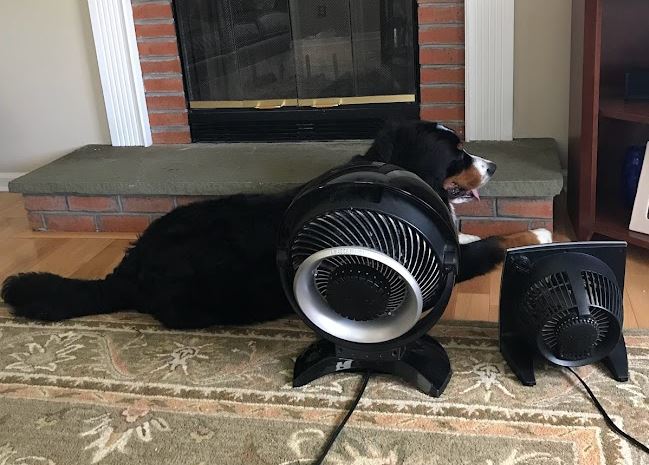
Tip 4: Turn on a fan to keep him cool.
Even though he got this disease in the middle of winter, he was still really hot. He was incessantly panting, and even when he started showing signs of health, he wasn’t comfortable sleeping. Oftentimes, he wanted to sleep outside in the snow. I wanted to buy a small fan to blow directly on him to help keep him cool. I ended up buying a Vornado fan from Amazon.
The fan was perfect for him. Now everywhere we travel to, he needs his Vornado fan!
Tip 5: Buy an elevated dog bed.
Until his diagnosis, he was sleeping in a crate. But after he was diagnosed he wanted to sleep with me in bed, which I let him do the first couple of nights. When he was put on steroids, he became way too hot and didn’t want to sleep inside at all. The fan definitely helped, but it was a real winner once I combined it with the dog cot.
The dog cot helped even more because the mesh fabric is breathable. The fan circulates the air above and below him, which keeps him really cool. Now he sleeps on a dog cot beside me every night. Sick or not, I don’t think I’ll ever own a big dog without an elevated dog bed.
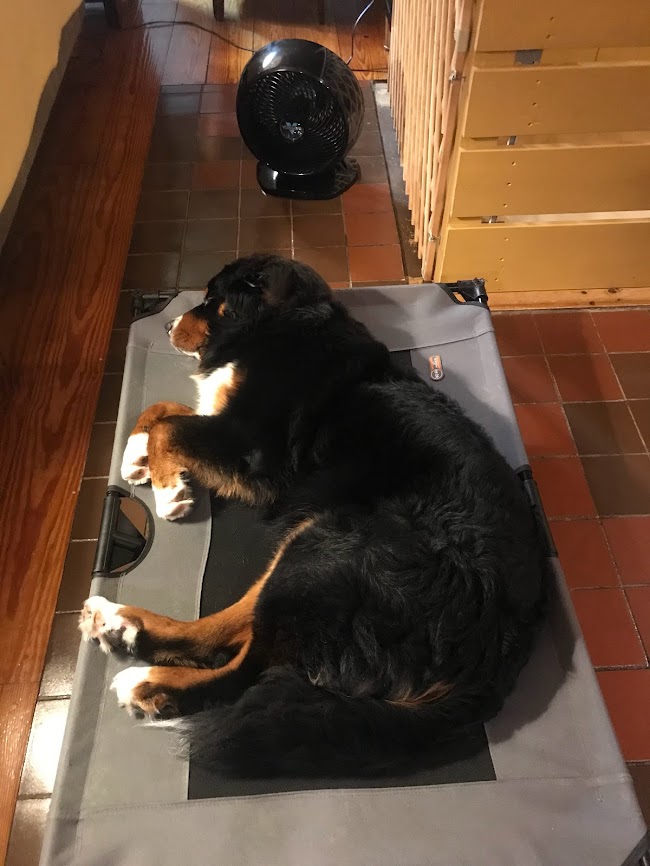
If you are looking for a dog cot recommendation, I wrote a review on Ezra’s dog cot from K&H.
Tip 6: Buy a cooling mat.
The cooling mat is pressure activated by a cooling gel technology. When the dog lays on it, it starts to cool down. It lasts for a few hours, and it recharges when not in use. This idea occurred to me pretty late in his diagnosis. By the time I ordered it, he was on the mend and acting like his normal self again. Since he was still a puppy, he was not interested in laying down really ever. I decided to return it because he was only interested in chewing it and I didn’t want him to ingest the cooling gel.
So for getting over Puppy Strangles, it wasn’t super helpful. But now that he is older, I bought it again to put in the back of the car to keep him cool during road trips, and he does like it.
Conclusion
I hope I never have a dog with this autoimmune disease again. But if I do, I would probably try every single one of these tips again. Each dog is a unique snowflake and what worked for Ezra may not for my next dog. What didn’t work for Ezra may work like a charm for my next dog.
Any tips or tricks I missed? Comment below and let me know!

